Private First Class John Willie Blue
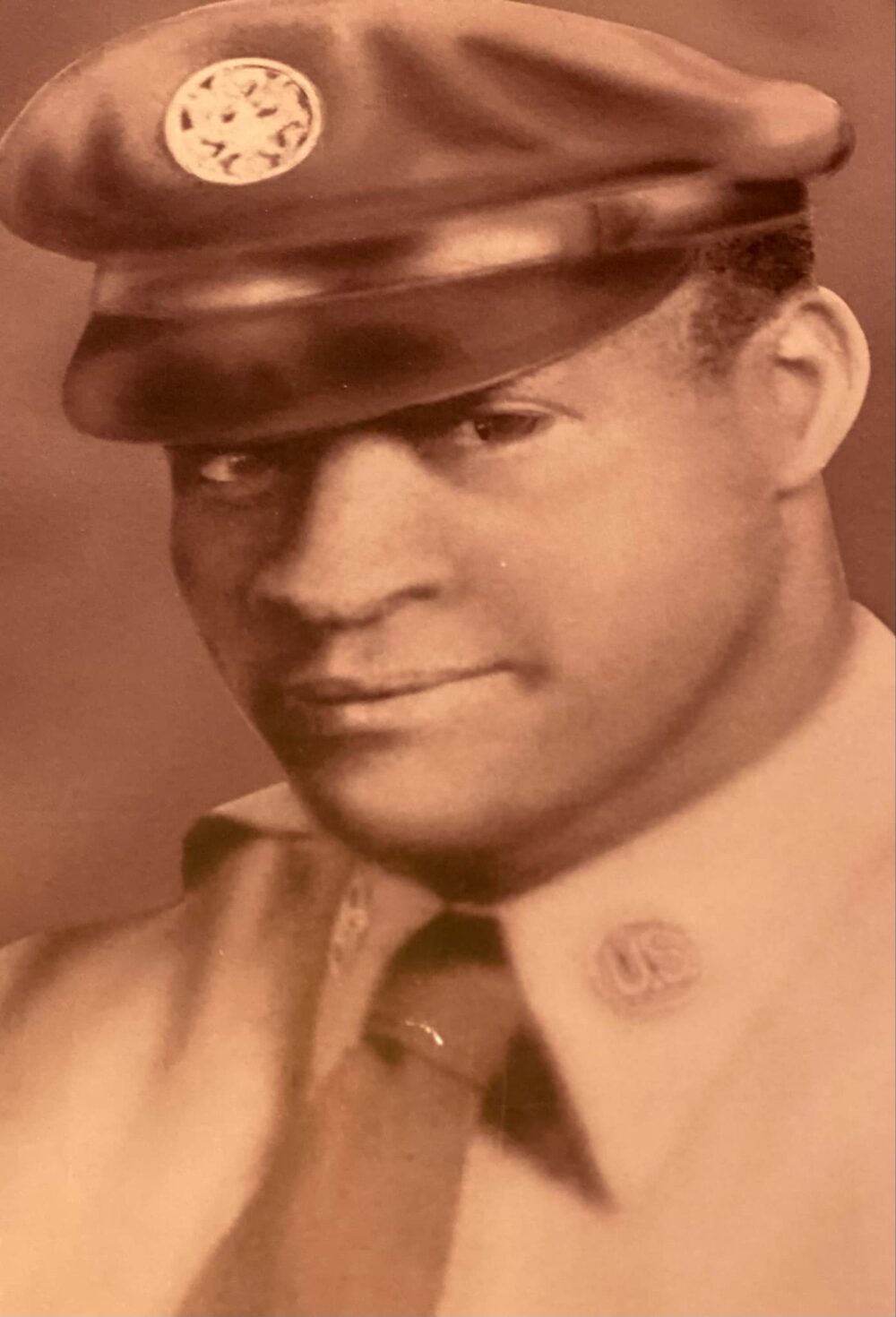
- Unit: Company K, 23rd Infantry Regiment, 25th Infantry Division
- Date of Birth: May 21, 1932
- Entered the Military: June 11, 1953
- Date of Death: October 24, 2020
- Hometown: Fayetteville, North Carolina
- Place of Death: Wichita, Kansas
- Award(s): Korean Service Medal with three Bronze Stars, United Nations Service Medal, National Defense Service Medal, Overseas Service Bars (2)
- Cemetery: Section CBWD, Row D, Site 10. Kansas Veterans Cemetery, Winfield, Kansas
Mentored by Dr. Angie Gumm
St. Mary Parish Catholic School
2024/2025
Early Life
John Willie Blue was born in Godwin, North Carolina, on May 21, 1932. His father, Jim, was a construction laborer, while his Mother, Mary, worked as a laundress out of their home. John Blue was the fourth of five children. He had two sisters, Margie and Lee Anna, and two brothers, James and William.
When John was young, the family moved to Fayetteville, North Carolina, which was a much larger community. The family lived in a racially segregated neighborhood, and young Blue attended Edward Evans Elementary School and E.E. Smith High School. Both were segregated schools.
He left school in 1946, at the age of 14, to work. Blue taught swimming and, in 1948, went to work as a restaurant helper, which involved washing dishes, scouring floors, washing windows, and doing prep work for cooks. In 1951, Blue was employed as a shoe repairman’s helper. He earned a $25 weekly salary from the shoe store for removing soles and heels from shoes that needed repair, as well as selling shoe accessories.

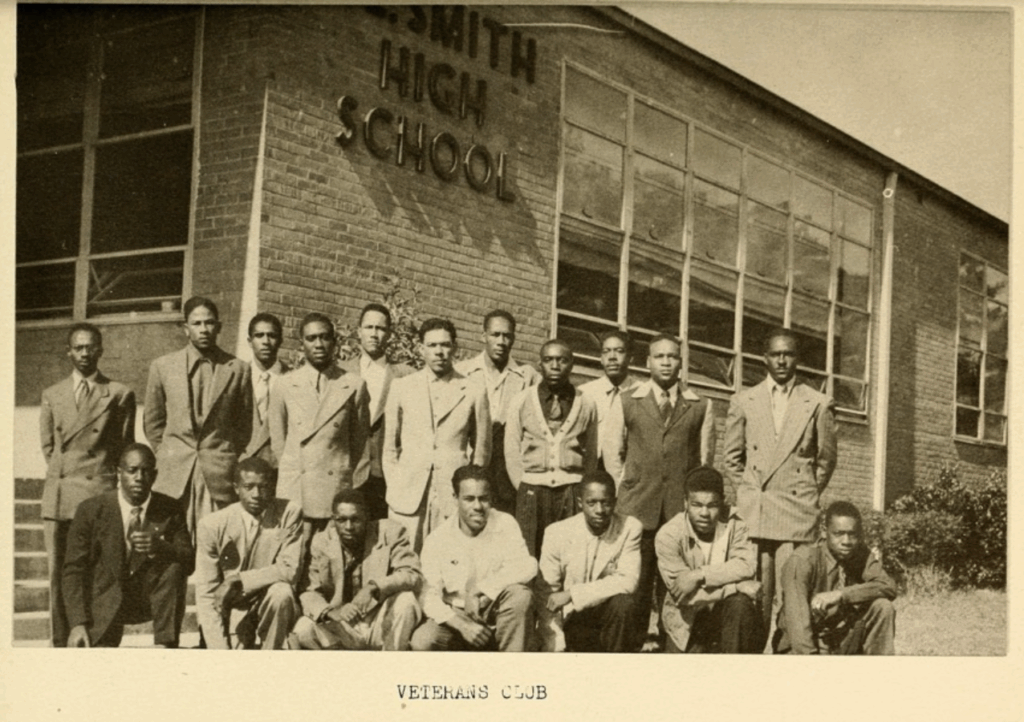
Homefront
While Blue was growing up, North Carolina remained segregated, and Black and White boys and girls did not go to school together. However, citizens of different races in Fayetteville interacted in informal settings. For example, when the Homestead Hurricane struck the community in 1945, people reached across racial lines and helped one another as neighbors.
Fayetteville was right next to Fort Bragg, one of the largest military bases in the world. As a result, the 1940s and 1950s were boom years for the town. The town’s population nearly doubled from the start of World War II to 1953, when it hit 38,000. This growth increased consumer demand. In response, the business district added clothing stores, restaurants, and motels to accommodate the many tourists and visitors who came to the area. During that economic surge, existing businesses were revitalized and new ones were established to meet the increased demand for goods.
Cotton and tobacco were the major crops of the area. Ten million pounds of tobacco were sold in the Fayetteville tobacco market in 1951. People who came to town to sell their tobacco often stayed to do their shopping in the growing city. While the community was growing and changing, the work of tobacco farming remained largely unchanged from 1880 to 1950. It was a labor-intensive task, which required 900 man-hours to harvest one acre of tobacco.
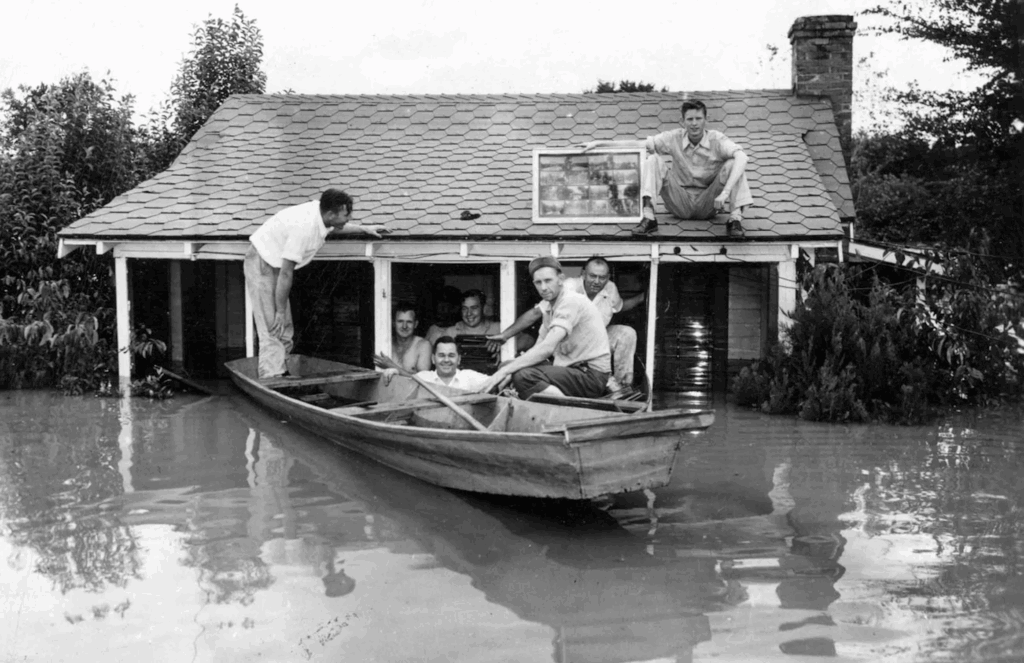
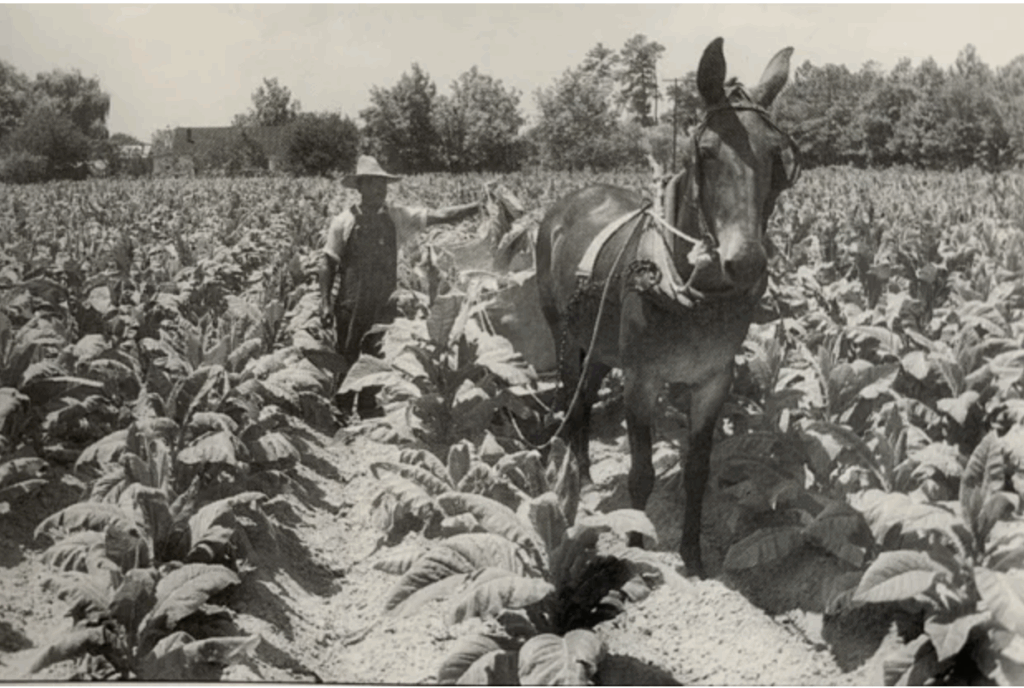
Military Experience
John Blue enlisted in the U.S. Army on December 6, 1951, in Fort Jackson, South Carolina. During his service, he was assigned to Fort Ord, California; Fort Eustis, Virginia; and Fort Lawton, Washington.
On June 25, 1952, he requested to be sent to Korea—a rare and brave request during a perilous war. He arrived in Yokohama, Japan, on September 28, 1952, and then traveled to Pusan, Korea, on October 7.
Private Blue served in Korea for one year and eight days, as part of the 23rd Infantry Regiment, which was known as “The Tomahawks” due to their reputation for brave fighting. During his time in Korea, which lasted until October 1953, he served as a stevedore, loading and unloading cargo, as well as a light infantryman, an ammunition bearer, a driver, and a rifleman. While he willingly volunteered for military service in Korea and wanted to serve in his trained capacity as a rifleman, Blue had some compliance and consistency issues that resulted in official discipline.
Throughout his service, however, he remained consistent in his love and support for his family. He sent his mother $35-40 each month, about one-third of his paycheck, for her care and that of his younger brother. Private Blue received the Korean Service Medal with three Bronze Stars, the United Nations Service Medal for Korea, the National Defense Service Medal, and two Overseas Service Bars.
After the war ended, Blue transferred from the Army to the Air Force. His Air Force training took place at Sampson Air Force Base in Seneca, New York. After training, he was transferred to the Smoky Hill Air Force Base in Salina, Kansas, where he received secret clearance and was assigned to the 802nd Air Base Group’s Installation Squadron. Blue served as a firefighter helper from February 1954 to January 1956. He then switched to food service duties. Official comments on Blue’s DD-214 document indicated he was recommended for disposition due to non-productivity. Following that recommendation, on May 2, 1957, Blue was discharged from the Air Force “under honorable conditions.”
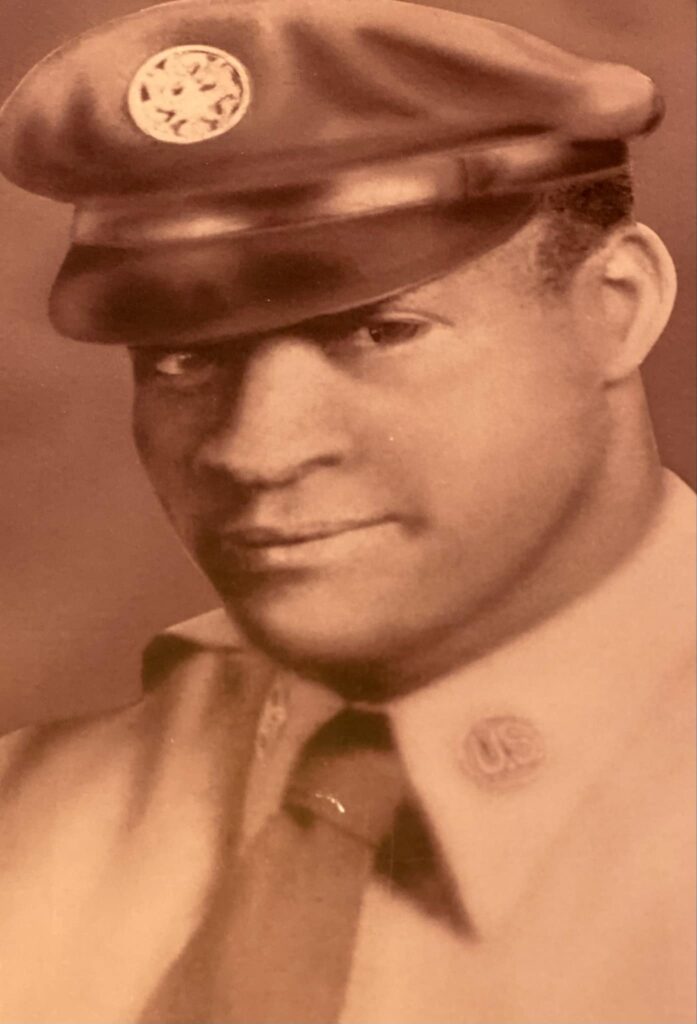

Veteran Experience
When Blue left the military in 1957, he requested that his mail be sent to Wichita. He stayed in Kansas because he said, “That is where I landed.” According to his funeral program, while Blue was in the military, he “accepted the Lord Jesus Christ into his life.” When he moved to Wichita, he joined the Holy Temple Church of God in Christ, where he later became an Elder.
Blue initially worked as a butcher at the Cudahy Meat Packing Plant, then earned his business certificate at Wichita Vo-Tech and opened up his own cleaning service.
It was in Wichita that Blue married Lola Martin in 1964. Their family grew to include a daughter, Margie, and a son, Lee Martin. Blue later shifted careers and became the Pastor at Hugoton Temple Church of God in Christ in Hugoton, Kansas.
Commemoration
John Blue passed away on October 4, 2020. He is buried at the Kansas Veterans’ Cemetery in Winfield, Kansas. John Blue will be remembered for his service to his country, his family, and his church.

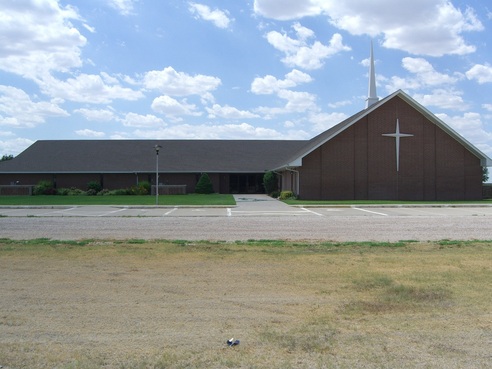
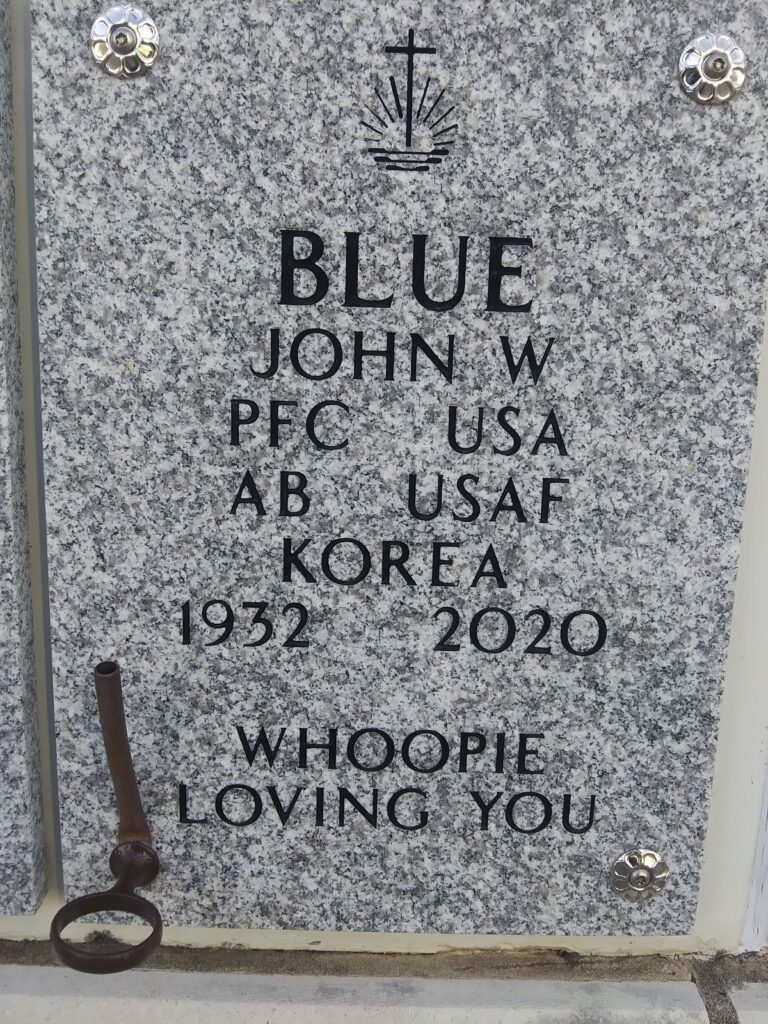
Bibliography
Primary Sources
Blue Family Records. 1932-2020. Courtesy of Margie Blue.
Craft, Andrew. “From the Archives: Photos of the Cumberland County Area from 1940 to 1949.” The Fayetteville Observer [Fayetteville, NC], July 11, 2024. https://www.fayobserver.com/picture-gallery/news/local/2024/07/11/photos-of-the-cumberland-county-area-from-1940-to-1949/74339778007/.
“Fayetteville Has Phenomenal Growth.” The Daily Record [Dunn, NC], August 31, 1953. https://chroniclingamerica.loc.gov/lccn/sn88063132/1953-08-31/ed-1/seq-1/.
John Willie Blue, DD-214, Department of the Army. National Archives and Records Administration – St. Louis.
John Willie Blue, Official Military Personnel File, Department of the Army. National Archives and Records Administration – St. Louis.
“Mr. Tobacco Farmer,” The Daily Record [Dunn, NC], August 1, 1952. https://chroniclingamerica.loc.gov/lccn/sn88063132/1952-08-01/ed-1/seq-12.
North Carolina. Cumberland County. 1940 U.S. Census. Digital images. https://ancestryclassroom.com.
North Carolina. Cumberland County. 1940 U.S. Census. Digital images. https://ancestryclassroom.com.
The Smithsonian Yearbook. Fayetteville, North Carolina: E.E. Smith High School, 1947.
Secondary Sources
“5 Historical Facts You Didn’t Know About Fayetteville.” PMI Atlanta. Updated January 18, 2022. Accessed November 29, 2024. https://www.riverdalepropertymanagementinc.com/blog/5-historical-facts-you-didnt-know-about-fayetteville.
“Cumberland County’s Textile Mills Have Faded Away.” TMC Net News. Accessed November 29, 2024. https://www.tmcnet.com/usubmit/2009/01/30/3951898.htm.
“Fayetteville and Fort Bragg, Serving Each Other.” NPR. Updated August 14, 2005. Accessed November 19, 2024. https://www.npr.org/transcripts/4798141?storyId=4798141.
“Homestead Hurricane 1945 – Flooding in the Eastern Carolinas.” National Weather Service. Updated January 30, 2009. Accessed November 29, 2024. https://www.tmcnet.com/usubmit/2009/01/30/3951898.htm.
“Hugoton Church.” First Church of God. Accessed April 7, 2025. https://fcoghug.weebly.com/.
“John Willie Blue.” Find a Grave. Updated October 29, 2020. Accessed November 30, 2024. https://www.findagrave.com/memorial/217810021/john-willie-blue.
“John Willie Blue.” Jackson Mortuary. Accessed January 6, 2024. https://www.thejacksonmortuary.com/gallery/john-blue.
“John Willie Blue.” Veterans Legacy Memorial, U.S. Department of Veterans Affairs. Accessed April 19, 2025. https://www.vlm.cem.va.gov/JOHNWILLIEBLUE/9b51a3.
“Men and Mules.” Black and Wide-Awake. Last updated October 6, 2018. Accessed April 7, 2025. https://afamwilsonnc.com/2018/10/06/men-and-mules/.
“Military Bases in North Carolina.” Department of Military and Veterans Affairs. Accessed November 29, 2024. https://www.milvets.nc.gov/benefits-services/military-bases-north-carolina.
“Tobacco Farming the Old Way.” NCpedia. Accessed November 29, 2024. https://www.ncpedia.org/anchor/tobacco-farming-old-way.
This profile was funded by a grant from the United States Department of Veterans Affairs. The opinions, findings, and conclusions stated herein are those of the author and do not necessarily reflect those of the United States Department of Veterans Affairs.

